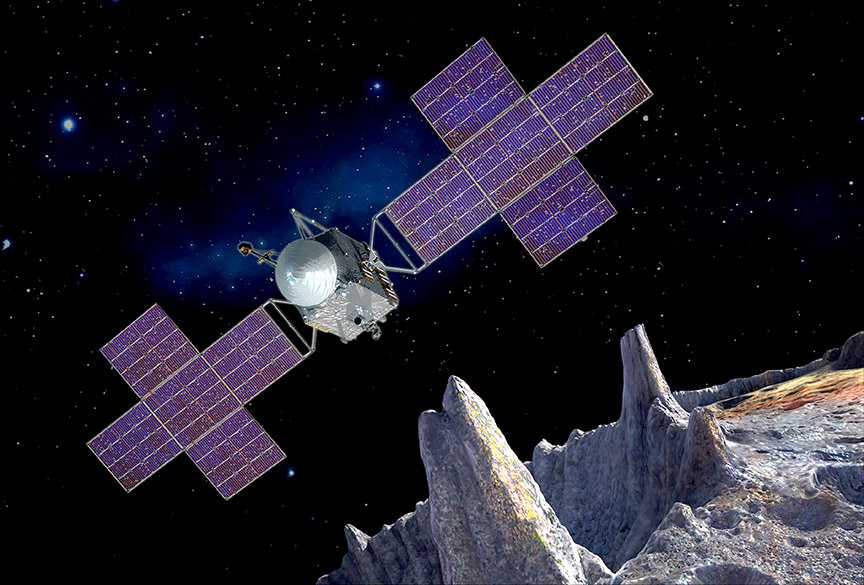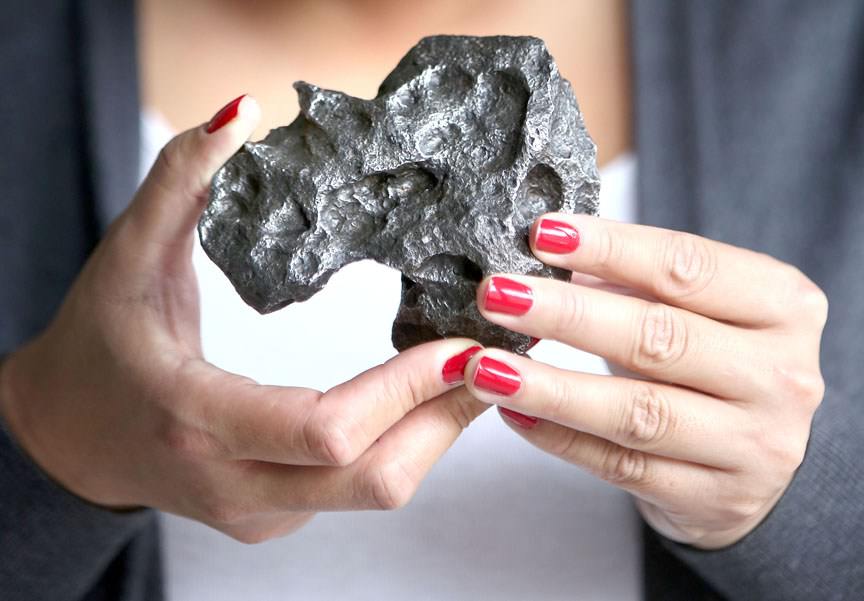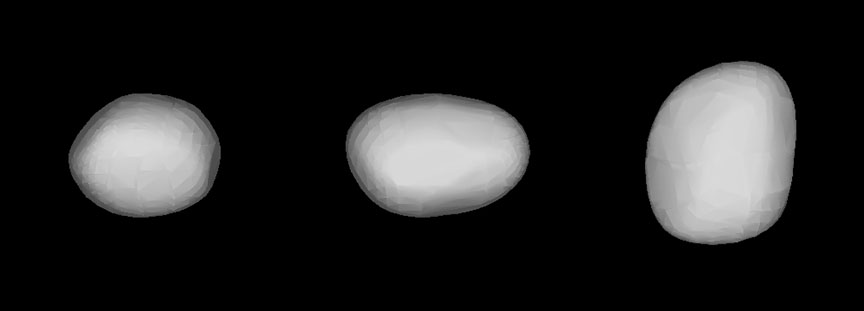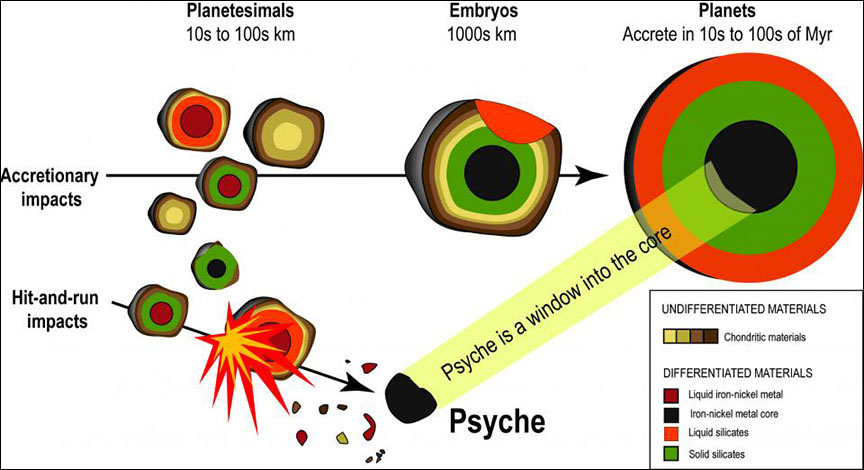
This illustration depicts the spacecraft of NASA's Psyche mission orbiting the metal asteroid Psyche (pronounced SY-kee). Solar power with electric propulsion will be used to propel the spacecraft to Psyche. The asteroid's average distance from the sun is about three times the Earth's distance or 280 million miles. Credit: SSL/ASU/P. Rubin/NASA/JPL-Caltech
I'm getting psyched for Psyche, which is both the name of an asteroid orbiting the sun between Mars and Jupiter and NASA's mission to the asteroid. Part of the reason for this excitement comes from learning today that NASA has moved up the launch one year to 2022, with a planned arrival in the asteroid belt in 2026 — four years earlier than the original timeline.
The mission team calculated a new trajectory to Psyche, one eliminating the need for an Earth gravity assist, that would get the probe there about twice as fast and reduce costs.

Fly over Psyche in this cool animation
"We challenged the mission design team to explore if an earlier launch date could provide a more efficient trajectory to the asteroid Psyche, and they came through in a big way," said Jim Green, director of the Planetary Science Division at NASA Headquarters in Washington. "This will enable us to fulfill our science objectives sooner and at a reduced cost."

Campo del Cielo meteorites are heavy, metallic and dimpled with regmaglypts or "thumbprints" where softer materials melted away during the meteorite's fall through the air. This small fragment was once part of a different planetary core similar to Psyche. Credit: Bob King
With a diameter of over 120 miles (200 km), Psyche is one of the ten most massive asteroids in the main asteroid belt. Like certain meteorites found on Earth, it's made almost entirely of nickel-iron metal. Metal is usually found as pepper-like flecks in stony meteorites, which represent the crust of an asteroid. Heat released during the formation of a large asteroid or planet causes the rock to melt, releasing heavier elements like iron and nickel which trickle downward under the force of gravity to form a metallic core. Radioactivity can also play a role in heating the rock.

A 3-D model of the asteroid Psyche based on its light curve, ie. variations in brightness as it rotates. Credit: Astronomical Institute of the Charles University: Josef ?urech, Vojt?ch Sidorin / CC BY 4.0
That's why Psyche's kind of weird. How do you get a 120-mile-wide body of exposed metal floating around space? Astronomers think it was the core of a developing planet — a protoplanet — and probably covered once upon a time by a mantle of rock. Through collisions with other asteroids, that rock layer was eventually blasted away, exposing the metal core. As such, it offers a unique look into the violent collisions that created Earth and the terrestrial planets.

Planets start as small planetesimals (10-100 kilometers across) and grow by gathering up material from new impacts until becoming large enough to serve as embryos for planets. Psyche may have started down the road of planethood only to be chopped down to size by hit-and-run impacts that broke away at its rocky envelope. Credit: Arizona State University
After a 4.6 year cruise that includes a Mars gravity assist flyby, the spacecraft will arrive at Psyche and spend 20 months in orbit mapping and studying the asteroid's properties. The scientific goals of the mission are to understand the building blocks of planet formation and explore a new type of asteroid never seen up close before. The mission team will seek to find out whether Psyche is the core of an early planet, how old it is, what its surface is like and whether it formed in similar ways to Earth's core.
Who knows, maybe we'll learn it was once large enough to be considered a planet just like our own. You can stay in touch with mission developments on their Twitter site.
No comments:
Post a Comment